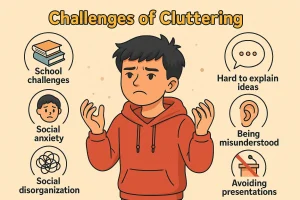Strengthen Your Relationship: Explore the Gottman Method
By Prapoorna M
Last Updated: May 22, 2024
Gottman Method: Have you ever felt like your relationship needs a boost? Maintaining a healthy relationship is crucial for our well-being, but it can sometimes feel challenging. Whether you’re facing frequent misunderstandings, unresolved conflicts, or simply want to strengthen your bond, the Gottman Method can be the right approach to make a real difference.
This is where proven methods come into play. Just as we turn to experts for medical or financial advice, seeking guidance for our relationships can lead to significant improvements. One such method that has stood the test of time is the Gottman Method. Developed by renowned psychologists Dr. John Gottman and Dr. Julie Schwartz Gottman, this approach offers a transformative way to enhance your relationship.
What is the Gottman Method?
The Gottman Method is a research-based approach to couples therapy that aims to improve relationship dynamics and foster a deeper connection between partners. Developed by Dr. John Gottman and Dr. Julie Schwartz Gottman, this method is built on over 40 years of extensive research and empirical studies involving thousands of couples. The core of the Gottman Method is the Sound Relationship House Theory, which outlines the essential elements of a healthy relationship.
Who Are Dr. John Gottman and Dr. Julie Schwartz Gottman?
Dr. John Gottman is a renowned psychologist known for his pioneering work on marital stability and relationship analysis. Through his research, he has identified key behaviors and interactions that predict the success or failure of relationships. His work, alongside his wife, Dr. Julie Schwartz Gottman, who is also a distinguished psychologist, led to the creation of the Gottman Institute. Together, they have developed therapeutic interventions and educational resources to help couples build and maintain healthy, lasting relationships.
The Sound Relationship House Theory
The Sound Relationship House Theory is the foundation of the Gottman Method. It uses the metaphor of a house to illustrate the components of a stable and fulfilling relationship. Here are the key elements:
- Build Love Maps: This involves getting to know your partner’s inner psychological world, including their hopes, fears, and dreams. By building love maps, couples can develop a deeper understanding and appreciation for each other.
- Share Fondness and Admiration: Expressing appreciation and respect for your partner strengthens the bond between you. This step is crucial in countering feelings of contempt and fostering a positive relationship dynamic.
- Turn Towards Instead of Away: This principle emphasizes the importance of responding to your partner’s bids for connection. Small, everyday interactions are the building blocks of a strong relationship.
- The Positive Perspective: Maintaining a positive approach to problem-solving and interactions helps couples navigate conflicts more effectively. It involves seeing your partner’s actions in a positive light and giving them the benefit of the doubt.
- Manage Conflict: Conflict is inevitable in any relationship, but how couples manage it makes a significant difference. The Gottman Method teaches strategies to handle conflicts constructively, focusing on managing rather than resolving all disagreements.
- Make Life Dreams Come True: Supporting each other’s goals and aspirations creates an atmosphere of mutual respect and partnership. This encourages open communication about individual hopes and dreams.
- Create Shared Meaning: Developing shared values, goals, and rituals enhances the connection between partners. This involves creating a shared narrative and understanding of your relationship’s significance.
- Trust: Trust is built when partners consistently act in ways that benefit each other’s well-being. It means knowing that your partner has your back and will support you through challenges.
- Commitment: Commitment involves dedicating yourself to the relationship for the long term. It means cherishing your partner’s positive qualities and working together to overcome difficulties.
By understanding and applying these principles, couples can build a solid foundation for their relationship, much like constructing a well-built house. The Gottman Method provides practical tools and techniques to help partners strengthen their bond, improve communication, and foster a deeper emotional connection.
The Sound Relationship House Theory
The Sound Relationship House Theory is the backbone of the Gottman Method, providing a comprehensive framework for building and maintaining a healthy, fulfilling relationship. Let’s dive into each component of this theory to understand how it can help transform your relationship.
Solvable vs. Perpetual Problems
| Aspect | Solvable Problems | Perpetual Problems |
|---|---|---|
| Definition | Situational issues that arise and can be resolved with the right approach. | Fundamental differences between partners will always be a part of the relationship. |
| Approach | Utilize communication and compromise to find a mutually agreeable solution. | Focus on management and acceptance of these issues to prevent them from harming the relationship. |
| Examples | Tasks like planning a vacation, dividing household chores, or coordinating schedules. | Inherent differences such as personality traits, core values, religious beliefs, or lifestyle choices. |
| Strategy | Engage in collaborative problem-solving, where both partners work together to find a solution. | Use ongoing dialogue to understand each other’s perspectives and navigate these differences constructively. |
| Outcome | Achieve resolution where the issue is fully addressed and resolved. | Aim for ongoing management, where the issue is managed in a way that minimizes its negative impact. |
Build Love Maps: Understanding Your Partner’s Inner World
Love Maps are the foundation of the Sound Relationship House. This concept involves getting to know your partner’s inner world, including their dreams, fears, and experiences. By understanding what makes your partner tick, you can create a deeper connection and show genuine interest in their life. It’s about knowing the small and big details that make your partner who they are.
Share Fondness and Admiration: Fostering Respect and Affection
Expressing fondness and admiration for your partner is crucial in maintaining a positive relationship. This involves regularly acknowledging and appreciating your partner’s positive qualities and actions. By focusing on what you admire and respect about your partner, you can build a strong emotional foundation that counteracts negativity and resentment.
Turn Towards Instead of Away: Responding to Your Partner’s Bids for Connection
Turning towards your partner means being attentive and responsive to their attempts to connect with you. These “bids” can be as simple as a request for attention or as significant as seeking emotional support. By turning towards these bids instead of away from them, you strengthen your emotional bond and show your partner that they matter to you.
The Positive Perspective: Maintaining a Positive Approach to Problem-Solving
Maintaining a positive perspective involves approaching relationship challenges with a constructive and optimistic mindset. This means giving your partner the benefit of the doubt and focusing on solutions rather than problems. A positive perspective helps couples navigate conflicts more effectively and fosters a resilient relationship dynamic.
Manage Conflict: Differentiating Between Solvable and Perpetual Problems
Conflict is a natural part of any relationship, but it’s essential to differentiate between solvable and perpetual problems. Solvable problems are situational and can be resolved through communication and compromise. Perpetual problems, on the other hand, stem from fundamental differences in personality or lifestyle. The goal is not always to resolve these perpetual issues but to manage them constructively and avoid letting them damage the relationship.
Make Life Dreams Come True: Supporting Each Other’s Aspirations
Supporting your partner’s dreams and aspirations is a critical aspect of a healthy relationship. This involves creating an environment where both partners feel comfortable sharing their goals and ambitions. By actively supporting each other’s dreams, couples can build a deeper sense of partnership and mutual respect.
Create Shared Meaning: Developing Shared Goals and Values
Creating shared meaning involves developing common goals, values, and rituals that give your relationship a sense of purpose. This could be anything from shared traditions and rituals to common life goals. By building a shared narrative, couples can create a stronger bond and a sense of unity.
Trust: Building Trust in the Relationship
Trust is the cornerstone of any healthy relationship. It’s built through consistent actions that demonstrate reliability, honesty, and mutual respect. Trust means knowing that your partner will act in your best interest and that you can depend on them in times of need. Building trust requires ongoing effort and commitment from both partners.
Commitment: Ensuring Long-Term Commitment and Gratitude
Commitment involves dedicating yourself to your relationship for the long haul. It’s about sticking together through the ups and downs and showing gratitude for each other’s presence in your lives. Long-term commitment means prioritizing the relationship and working together to overcome challenges.
How the Gottman Method Improves Relationships
Relationships are filled with highs and lows, but the way couples navigate these challenges can make all the difference. The Gottman Method is designed to address common relationship issues, fostering stronger and more resilient partnerships.
Addressing Common Relationship Issues
The Gottman Method tackles frequent conflicts and misunderstandings by providing couples with practical tools and techniques. Whether it’s dealing with communication breakdowns, managing conflicts, or rekindling emotional intimacy, this method offers structured strategies to help couples reconnect and thrive.
One of the core principles is the emphasis on the ratio of positive to negative interactions. Research by Dr. John Gottman found that successful relationships typically have five positive interactions for every negative one. This “magic ratio” helps maintain a positive atmosphere even when conflicts arise.
Importance of Positive Interactions
Positive interactions are crucial because they build a reservoir of goodwill that can buffer against the inevitable stresses and strains of life. Simple acts of kindness, appreciation, and affection can significantly enhance relationship satisfaction. These interactions don’t have to be grand gestures; even small moments of connection, like a hug or a compliment, contribute to a positive relational climate.
Strategies for Conflict Management and Resolution
The Gottman Method offers effective strategies for managing and resolving conflicts. Here are some key techniques:
- Soft Start-Up: Initiating conversations gently and respectfully, avoiding criticism or blame, helps prevent defensiveness, and keeps discussions productive.
- Repair Attempts: Efforts to de-escalate tension during conflicts, such as using humor or expressing affection, can help couples navigate disagreements more effectively.
- Self-Soothing: Taking a break to calm down when emotions run high prevents escalation and allows for more rational discussions later.
- Compromise: Finding a middle ground and making concessions is essential for resolving solvable problems and managing perpetual ones.
- Accepting Influence: Being open to your partner’s opinions and willing to adapt promotes mutual respect and understanding.
By focusing on these strategies, couples can turn potentially destructive conflicts into opportunities for growth and connection. The Gottman Method doesn’t just help resolve current issues but also equips couples with skills to handle future challenges more constructively.
Key Techniques of the Gottman Method
The Gottman Method incorporates several key techniques that are crucial for fostering a healthy and fulfilling relationship. These techniques are designed to address different aspects of a relationship, from assessing its current state to implementing therapeutic interventions and practical skills for ongoing improvement.
Assessment Process: Detailed Evaluation of the Relationship
The first step in the Gottman Method is a thorough assessment of the relationship. This process begins with a conjoint session where both partners meet with the therapist to discuss their relationship. Following this, each partner has individual interviews to share their personal perspectives and history.
During the assessment, couples complete detailed questionnaires that provide insights into their relationship dynamics, strengths, and areas for improvement. The information gathered from these assessments helps the therapist understand the couple’s unique situation and tailor interventions accordingly.
Therapeutic Interventions: Focus on Friendship, Conflict Management, and Shared Meaning
Once the assessment is complete, the therapist works with the couple to implement specific therapeutic interventions. These interventions focus on three primary areas:
- Friendship: Building a strong foundation of friendship is essential for a healthy relationship. The Gottman Method emphasizes the importance of knowing your partner’s inner world, sharing fondness and admiration, and turning towards each other in everyday interactions.
- Conflict Management: The Gottman Method provides couples with tools to manage conflicts constructively. Techniques such as soft start-up, repair attempts, and self-soothing help couples navigate disagreements without escalating tensions.
- Shared Meaning: Creating shared goals and values helps couples feel more connected and aligned in their relationship. The Gottman Method encourages couples to develop shared rituals and dreams, fostering a deeper sense of partnership.
Practical Skills: Tools for Enhancing Fondness, Admiration, and Emotional Connection
In addition to therapeutic interventions, the Gottman Method equips couples with practical skills to enhance their relationship daily. Some of these skills include:
- Love Maps: Continuously updating your knowledge about your partner’s world, including their likes, dislikes, and experiences.
- Expressing Appreciation: Regularly expressing fondness and admiration for your partner strengthens your bond and counteracts negativity.
- Turning Towards: Being responsive to your partner’s bids for connection, which can be as simple as acknowledging their presence or providing support when needed.
These practical skills help couples maintain a positive perspective, manage conflicts effectively, and build a resilient emotional connection. By integrating these techniques into their daily lives, couples can experience lasting improvements in their relationship.
Benefits of the Gottman Method
The Gottman Method offers a range of benefits that can significantly enhance the quality of your relationship. By focusing on improving communication, reducing conflict, and providing long-term strategies for relationship maintenance, this method can help couples build a stronger and more fulfilling connection.
Improvement in Communication and Intimacy
Effective communication is the cornerstone of any healthy relationship. The Gottman Method emphasizes the importance of open, honest, and respectful dialogue between partners. By learning to express thoughts and feelings clearly and listening actively, couples can avoid misunderstandings and strengthen their emotional bond.
Enhanced communication leads to greater intimacy as partners feel more understood and valued. Techniques like sharing fondness and admiration, turning towards each other’s bids for connection, and maintaining a positive perspective contribute to deeper emotional closeness and a more satisfying relationship.
Reduction of Conflict and Negative Interactions
Conflict is inevitable in any relationship, but how couples manage it can make all the difference. The Gottman Method provides strategies to handle disagreements constructively, reducing the frequency and intensity of negative interactions. By focusing on conflict management rather than conflict resolution, couples can navigate perpetual problems more effectively and prevent them from damaging the relationship.
Key techniques such as soft start-up, repair attempts, and self-soothing help partners de-escalate tensions and communicate more calmly and respectfully. This approach not only reduces immediate conflict but also helps build a more resilient and harmonious relationship.
Long-Term Tools and Strategies for Relationship Maintenance
One of the most significant benefits of the Gottman Method is its focus on long-term relationship maintenance. The skills and techniques learned during therapy sessions are designed to be applied in everyday life, helping couples sustain their improvements over time.
By creating shared meaning, supporting each other’s dreams, and building trust and commitment, couples can ensure their relationship remains strong and fulfilling. The Gottman Method equips partners with practical tools for ongoing growth and adaptation, allowing them to face future challenges with confidence and unity.
What to Expect in Gottman Method Therapy
Embarking on a journey with the Gottman Method can significantly transform your relationship. Here’s what you can expect when you start Gottman Method therapy:
Initial Assessment and Individual Sessions
The first step in the Gottman Method is a comprehensive initial assessment. This begins with a conjoint session where both partners meet with the therapist to discuss their relationship history and current concerns. Following this joint session, each partner has individual interviews. These individual sessions allow each person to share their personal perspective and experiences without the influence of the other partner’s presence.
During the assessment phase, couples also complete detailed questionnaires. These questionnaires provide a thorough picture of the relationship dynamics, strengths, and areas that need improvement. The therapist uses this information to tailor the therapy to the couple’s specific needs.
Regular Feedback and Progress Monitoring
After the initial assessment, the therapist provides detailed feedback based on the findings. This feedback session helps couples understand their relationship’s current state and identify key areas for growth. Regular sessions then focus on implementing the Gottman Method’s techniques and interventions.
Steps in the Gottman Method Assessment Process
| Step | Description |
|---|---|
| Joint Session | Initial meeting with both partners to discuss the relationship and set goals for therapy. |
| Individual Sessions | One-on-one interviews with each partner to gain personal perspectives and individual histories. |
| Questionnaires | Detailed forms completed by both partners to assess relationship strengths, weaknesses, and areas of concern. |
| Feedback Session | The Therapist provides insights based on the assessment and outlines a customized therapy plan. |
Conclusion
The Gottman Method can greatly enhance your relationship by improving communication, managing conflicts, and deepening your emotional connection. This method uses proven techniques to help you build a stronger, healthier partnership. Starting with a self-assessment, the Gottman Relationship Checkup, or seeking a Gottman-trained therapist can set you on the path to a better relationship. Each step you take brings you closer to a more fulfilling relationship.
At Wellness Hub, we are here to support you on your journey. Our resources and services are designed to help you apply the Gottman Method effectively, ensuring lasting improvements in your relationship. Explore our offerings and find the support you need to transform your relationship here. By embracing the Gottman Method, you can create a loving, resilient, and deeply connected relationship. Start today and see the positive impact it can have on your life.
Frequently Asked Questions:
1. What is the Gottman Method?
The Gottman Method is a research-based approach to couples therapy developed by Dr. John Gottman and Dr. Julie Schwartz Gottman. It focuses on improving relationship dynamics through the Sound Relationship House Theory, which includes principles like building love maps, managing conflict, and creating shared meaning.
2. How does the Gottman Method improve communication in relationships?
The Gottman Method improves communication by teaching couples practical skills like expressing fondness and admiration, turning towards each other’s bids for connection, and maintaining a positive perspective during conflicts. These techniques help partners communicate more effectively and strengthen their emotional bond.
3. Can the Gottman Method help with managing conflicts?
Yes, the Gottman Method provides strategies for managing conflicts constructively. Techniques such as soft start-up, repair attempts, and self-soothing help couples handle disagreements without escalating tensions, leading to healthier conflict management.
4. What should we expect during Gottman Method therapy?
During Gottman Method therapy, couples undergo an initial assessment, including individual sessions and questionnaires. This is followed by regular feedback and progress monitoring. The duration and intensity of therapy depend on the couple’s specific needs, with some opting for weekly sessions and others choosing intensive marathon therapy.
5. How do I get started with the Gottman Method?
You can start by taking a self-assessment or using the Gottman Relationship Checkup for a comprehensive evaluation of your relationship. Finding a Gottman-trained therapist is also a great step. At Wellness Hub, we offer various resources and services to help you begin your journey with the Gottman Method.
6. What are the benefits of the Gottman Method?
The benefits of the Gottman Method include improved communication, reduced conflict, and long-term strategies for maintaining a healthy relationship. By applying the principles of the Sound Relationship House Theory, couples can build a stronger, more resilient partnership.
7. Is the Gottman Method suitable for all couples?
Yes, the Gottman Method is designed to support couples from all backgrounds, including different economic, racial, and cultural sectors. It is also effective for same-sex couples and those with various relationship issues, from frequent arguments to emotional distance.
8. How long does it take to see results with the Gottman Method?
The time it takes to see results with the Gottman Method varies depending on the couple’s specific situation and the intensity of the therapy. Some couples notice improvements after a few sessions, while others may require more time. Consistent practice of the techniques learned in therapy is key to achieving lasting results.
9. Can the Gottman Method help with issues like infidelity or lack of intimacy?
Yes, the Gottman Method addresses a wide range of relationship issues, including infidelity and lack of intimacy. By focusing on building trust, enhancing emotional connection, and creating shared meaning, couples can work through these challenges and strengthen their relationship.
10. Where can I find a Gottman-trained therapist?
You can find a Gottman-trained therapist through the Gottman Institute’s referral network. Additionally, Wellness Hub offers resources and services to connect you with qualified therapists who can help you apply the Gottman Method to your relationship.
About the Author:
Prapoorna Mangalampalli
M.Sc., M.A., (Dual Masters in Psychology & English) – Counselor (6+ years of experience)
Prapoorna, with dual Master’s degrees in Psychology and English and over 6 years of experience, elevates human experiences through insightful counseling. She excels in online, marital, relationship, child, family, and career counseling. At Wellness Hub, she thrives in a team environment, valuing innovation, compassion, and client success. Connect with Prapoorna to find your voice and build a brighter future.
Book your Free Consultation Today
Parent/Caregiver Info:
Client’s Details:
* Error Message









